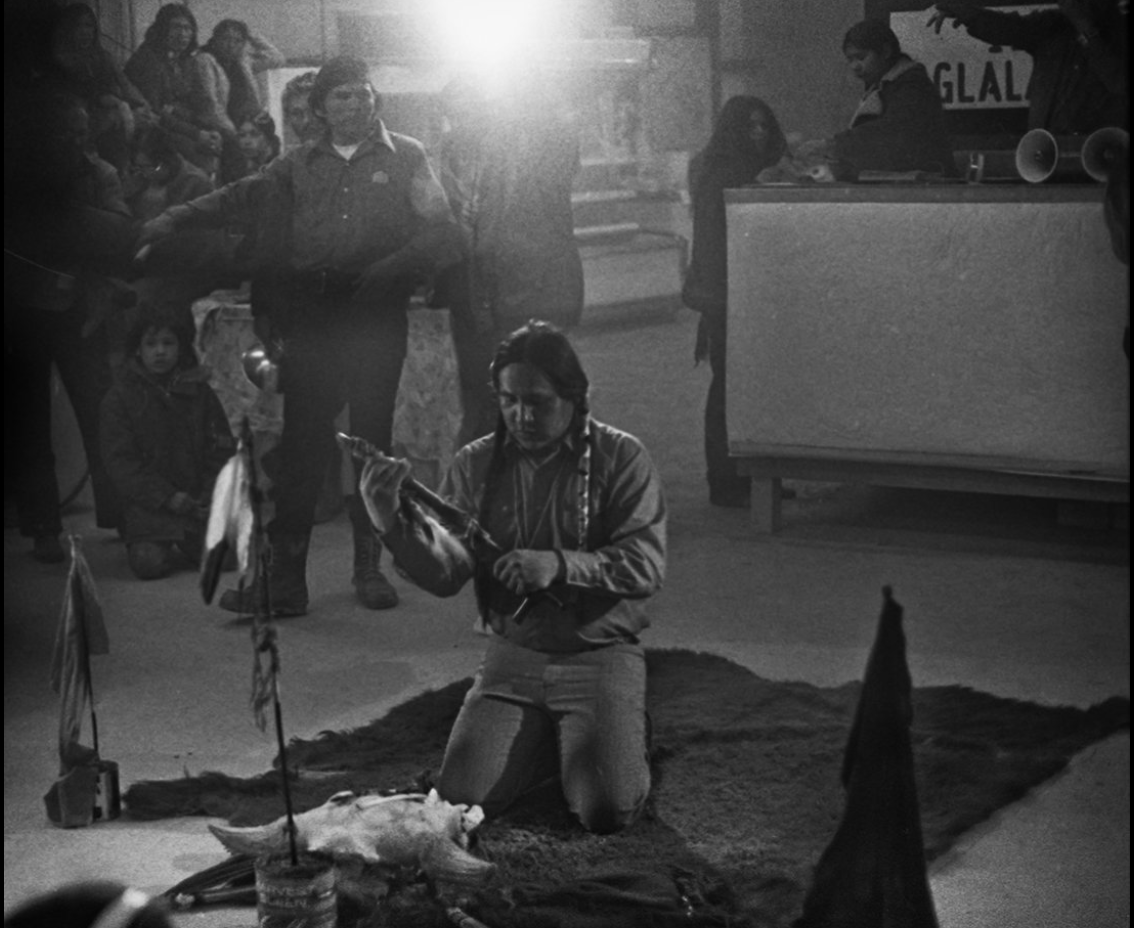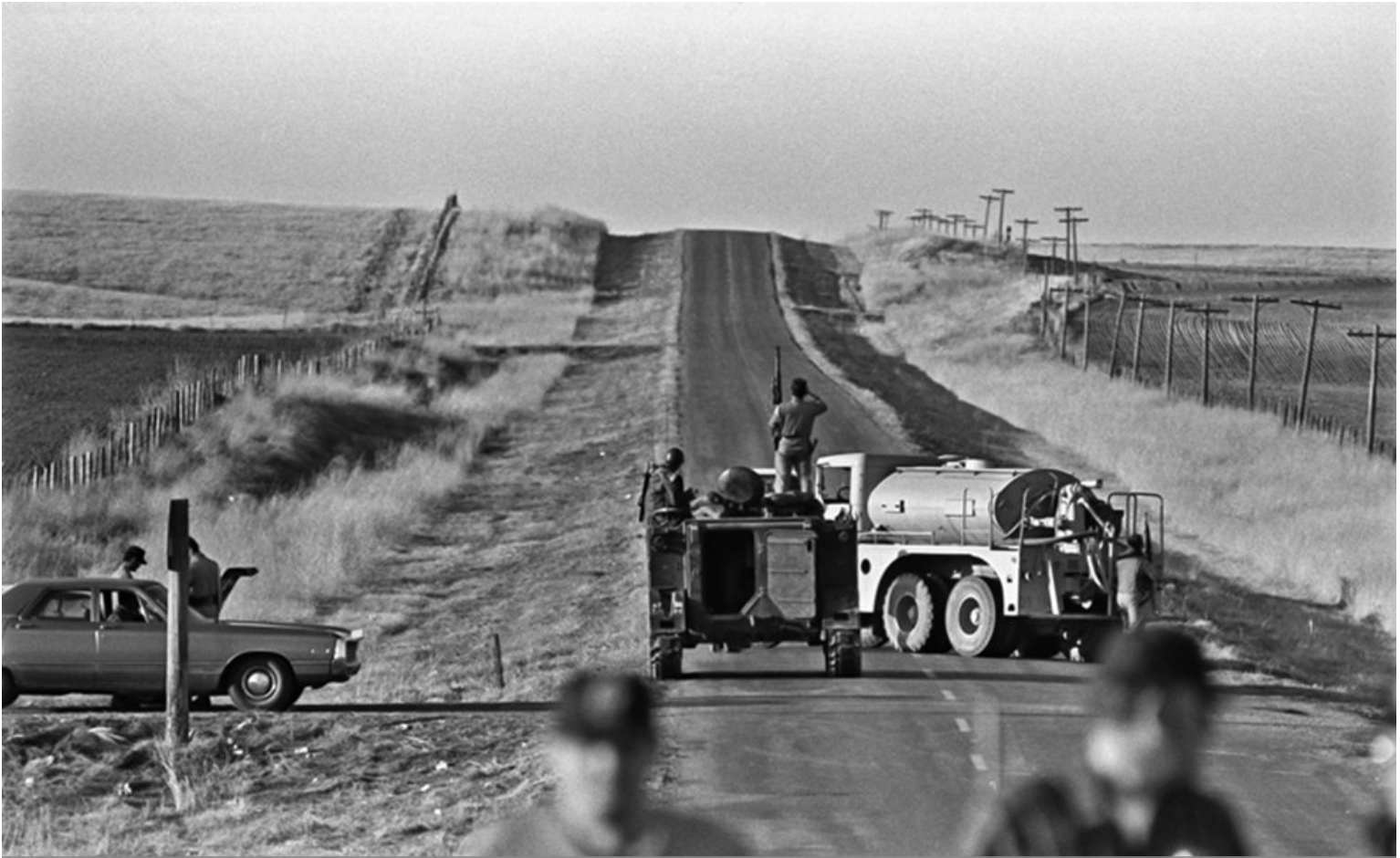The Wounded Knee incident began on February 27, 1973, when approximately 200 Oglala Lakota and followers of the American Indian Movement (AIM) seized and occupied the town of Wounded Knee, South Dakota, on the Pine Ridge Indian Reservation.
The Oglala Sioux Civil Rights Organization failed to impeach the tribal president Richard Wilson, who was accused of corruption. The tribesmen believed that Wilson, elected Tribal Chairman in 1972, nepotistic and that he worked too closely with the Bureau of Indian Affairs (BIA_. Opponents of Wilson also believed that he sold grazing rights on tribal land to local white ranchers at too low a rate.
Violence had also increased. Wilson’s private militia, the Guardians of the Oglala Nation (GOON), was accused of attacking political opponents to suppress opposition. Wilson was able to avoid impeachment because the prosecution was not ready to proceed immediately and the council voted to close the hearings. Wilson was offered protection from U.S. Marshals and he was kept at the BIA.
The tribe leaders and AIM leaders met with the communities to decide how to handle the deteriorating situation on the reservation. They decided to make a stand at Wounded Knee. They occupied the town and demanded the removal of Wilson from office and for the immediate revival of treaty talks with the U.S. Government.
The federal government set up roadblocks around the community and Wilson stationed GOONs outside federal boundaries.
Eventually, a small delegation flew to New York in attempt to be recognized by the United Nations as a sovereign state. They did not receive that recognition.
The equipment maintained by the military while in use during the siege included fifteen armored personnel carriers, clothing, rifles, grenade launchers, flares, and 133,000 rounds of ammunition, for a total cost, including the use of maintenance personnel from the National Guard of five states and pilot and planes for aerial photographs, of over half a million dollars.
On March 13, Harlington Wood Jr., the assistant attorney general for the Department of Justice 9DOJ0 became the first government official to enter Wounded Knee without a military escort. He met with AIM leaders for several days in attempts to find a resolution but he became ill and could no longer continue the peace negotiations.
Kent Frizell was then appointed by the DOJ to manage the situation. He cut off electricity, water, and food supplies to Wounded Knee, and prohibited the entry of the media.
U.S. Marshal Lloyd Grimm was shot early in the siege and suffered paralysis from the waist down. Frank Clearwater, a Cherokee from North Carolina, was shot and killed on April 17. Laurence Lamont, a local Oglala Lakota, was killed by a government sniper on April 26. After his death, tribal leaders called for an end to the occupation. A cease-fire was called for May 5.
After 71 days of occupation; the United States government took control of the town.

ADVERTISEMENT - CONTINUE READING BELOW

ADVERTISEMENT - CONTINUE READING BELOW

ADVERTISEMENT - CONTINUE READING BELOW

ADVERTISEMENT - CONTINUE READING BELOW

ADVERTISEMENT - CONTINUE READING BELOW

ADVERTISEMENT - CONTINUE READING BELOW

ADVERTISEMENT - CONTINUE READING BELOW

ADVERTISEMENT - CONTINUE READING BELOW

ADVERTISEMENT - CONTINUE READING BELOW

ADVERTISEMENT - CONTINUE READING BELOW

ADVERTISEMENT - CONTINUE READING BELOW

ADVERTISEMENT - CONTINUE READING BELOW

ADVERTISEMENT - CONTINUE READING BELOW

